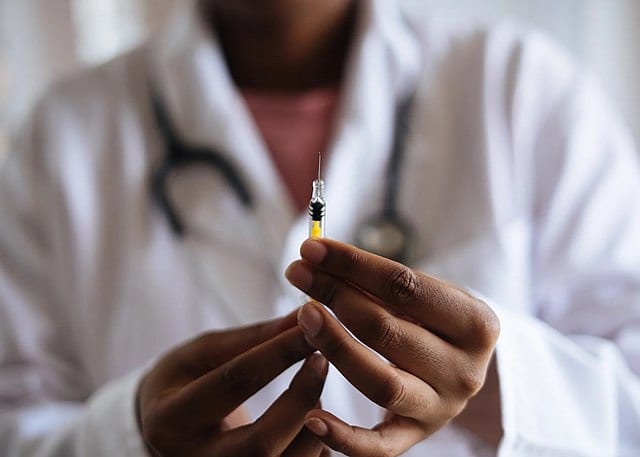
Summer Reading: FDA Reform and the Race for a Vaccine
Ross Marchand
August 28, 2020
Well, these past few weeks are probably not what lawmakers had in mind for a peaceful and relaxing August. Members of Congress have been Zooming into Capitol Hill briefings and hearings to hurl profanities, bicker about “relief” legislation, and listen to misinformation about the U.S. Postal Service. Traveling is fraught with difficulty because an immunity-boosting vaccine has yet to emerge. While government officials have repeatedly assured the American people that these innovations are just over the horizon, they remain stymied by an onerous Food and Drug Administration (FDA) approval process that prioritizes risk aversion over saving lives. By embracing new, game-changing technologies, the FDA can approve new tools to fight COVID-19 and allow lawmakers a reprieve from awkward Zoom calls.
The FDA is a sprawling regulatory agency that promulgates rules affecting virtually every consumer product under the sun (including sun block). The Taxpayers Protection Alliance’s 2019 report noted that, “The FDA is one of America’s largest and most consequential agencies, regulating roughly three-quarters of the food supply and virtually all prescribed drug products and medical devices. American consumers trust the agency with their lives because most products that are purchased and consumed each day must be approved by the FDA. The FDA is forced to make daily decisions with incredibly significant consequences; any mistake with either overregulating or underregulating products under the FDA’s purview can cost millions of lives.” Unfortunately, the agency has embraced overregulation and has advanced strict rules that add significant time and costs to product approval. For pharmaceuticals, the average time from the beginning of trials to final FDA approval spans more than 10 years and the process costs producers more than $2 billion per medication.
These costs and exorbitant delays persist because agency officials are afraid of the bad press that would follow approval of a product that results in deaths and injuries. George Mason University scholar Alex Tabarrok notes, “the FDA has an incentive to delay the introduction of new drugs because approving a bad drug (Type I error) has more severe consequences for the FDA than does failing to approve a good drug (Type II error). In the former case, at least some victims are identifiable, and the New York Times writes stories about them and how they died because the FDA failed. In the latter case, when the FDA fails to approve a good drug, people die but the bodies are buried in an invisible graveyard.”
These problems have been mitigated somewhat since the start of the coronavirus crisis as the FDA has shown commitment to streamlining rules. For example, the agency has issued emergency use authorizations to allow patients and providers access to some unapproved medical products such as modified ventilators. While this is encouraging, the FDA has hinted that the vaccine approval process may be tougher than expected.
The FDA has specified strict standards for the development of a coronavirus vaccine, stating that any product must be at least 50 percent effective. These standards ignore the fact that in a good year, real life vaccines for deadly ailments such as the seasonal flu are only 45 percent effective. Despite this low-sounding efficacy, public health experts still recognize the myriad public health benefits of the flu shot. Cleveland Clinic infectious diseases expert Dr. Alan Taege notes, “The more people you protect, the healthier the population is, and fewer people are going to have influenza to spread it to the rest of the population.” And, approval of a product doesn’t preclude the possibility of a better product coming along down the line.
The FDA’s risk-aversion certainly isn’t limited to coronavirus cures or the drug approval process. Despite the approval of the tobacco heating system called “IQOS” as a “modified risk tobacco product,” the agency has been notoriously reticent in allowing the sale of reduced-risk products that offer smokers the sensation of smoking a cigarette at a small fraction of the associated public health risks. The agency bizarrely classifies products such as vapes as “tobacco products” despite vapes containing no tobacco and being more than 95 percent safer than combustible cigarettes. This classification has resulted in e-cigarette manufacturers having to submit to the onerous Premarket Tobacco Product Application (PMTA) process, which can cost small businesses more than $400,000 per product in regulatory compliance costs. While the FDA has suspended PMTA requirements until September 9, the agency has yet to issue firm guidance as to the scope and severity of enforcement actions after that date. This is no small matter, since millions of smokers’ lives are at stake.
Unless the FDA adopts a more permissive regulatory approach, countless Americans will continue to suffer from preventable maladies. Public health issues such as the coronavirus and tobacco consumption may seemingly have little in common. But in both cases, billions of dollars are being spent by the private sector and products are being tested and developed to solve these issues and give consumers better, safer options. By streamlining rules and relaxing their onerous approval criteria, the FDA can open the door to more cures than ever before. And maybe, just maybe, lawmakers can finally get off Zoom.
